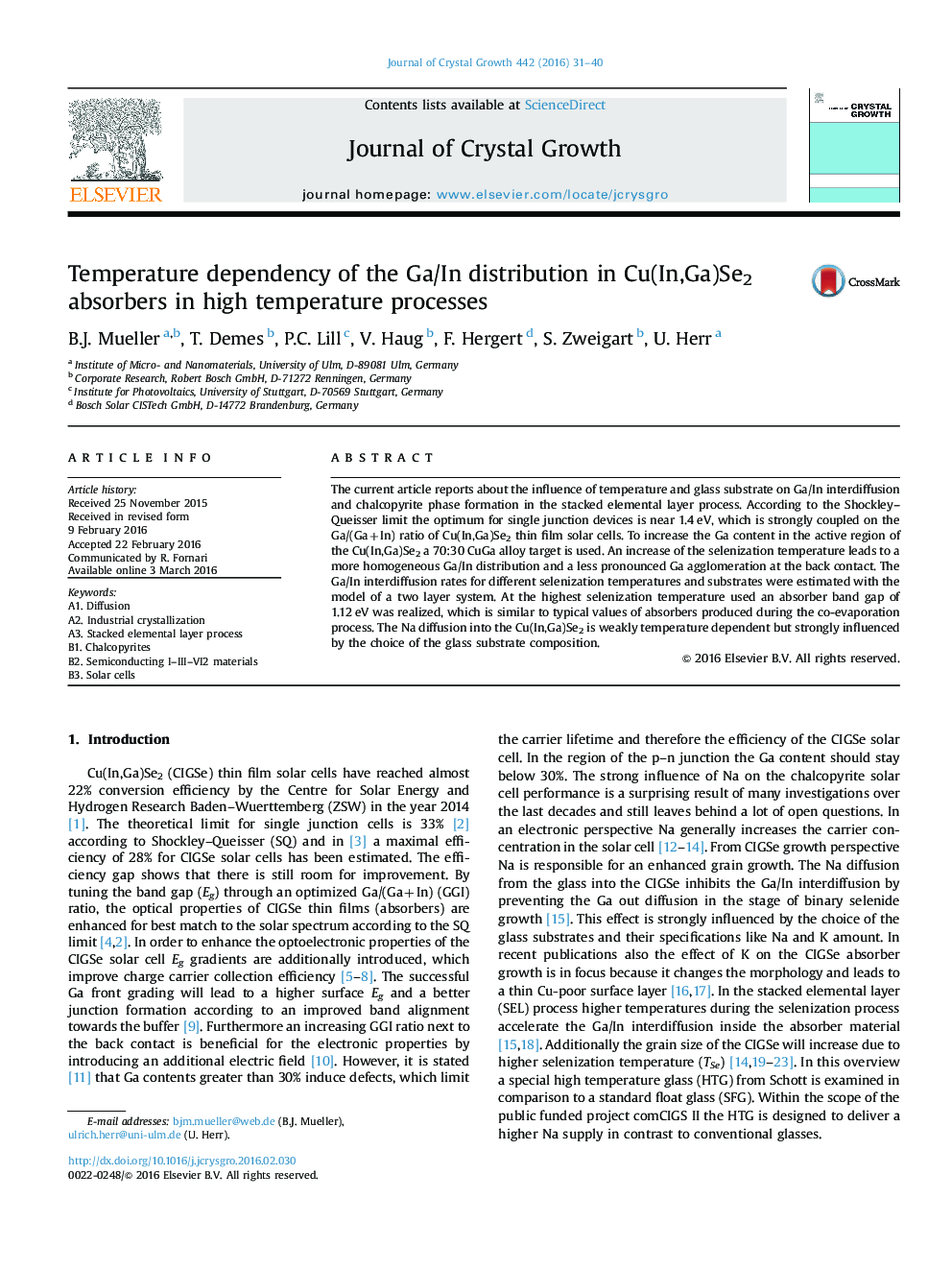| Article ID | Journal | Published Year | Pages | File Type |
|---|---|---|---|---|
| 1789670 | Journal of Crystal Growth | 2016 | 10 Pages |
Abstract
The current article reports about the influence of temperature and glass substrate on Ga/In interdiffusion and chalcopyrite phase formation in the stacked elemental layer process. According to the Shockley-Queisser limit the optimum for single junction devices is near 1.4Â eV, which is strongly coupled on the Ga/(Ga+In) ratio of Cu(In,Ga)Se2 thin film solar cells. To increase the Ga content in the active region of the Cu(In,Ga)Se2 a 70:30 CuGa alloy target is used. An increase of the selenization temperature leads to a more homogeneous Ga/In distribution and a less pronounced Ga agglomeration at the back contact. The Ga/In interdiffusion rates for different selenization temperatures and substrates were estimated with the model of a two layer system. At the highest selenization temperature used an absorber band gap of 1.12Â eV was realized, which is similar to typical values of absorbers produced during the co-evaporation process. The Na diffusion into the Cu(In,Ga)Se2 is weakly temperature dependent but strongly influenced by the choice of the glass substrate composition.
Related Topics
Physical Sciences and Engineering
Physics and Astronomy
Condensed Matter Physics
Authors
B.J. Mueller, T. Demes, P.C. Lill, V. Haug, F. Hergert, S. Zweigart, U. Herr,
